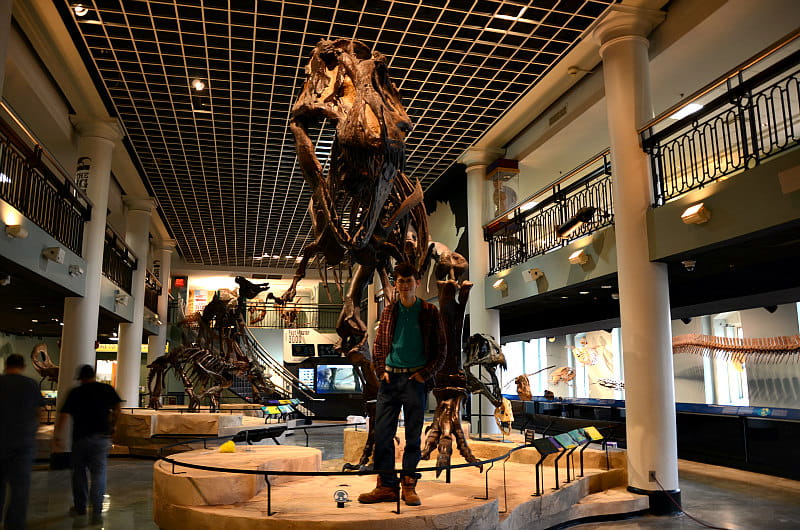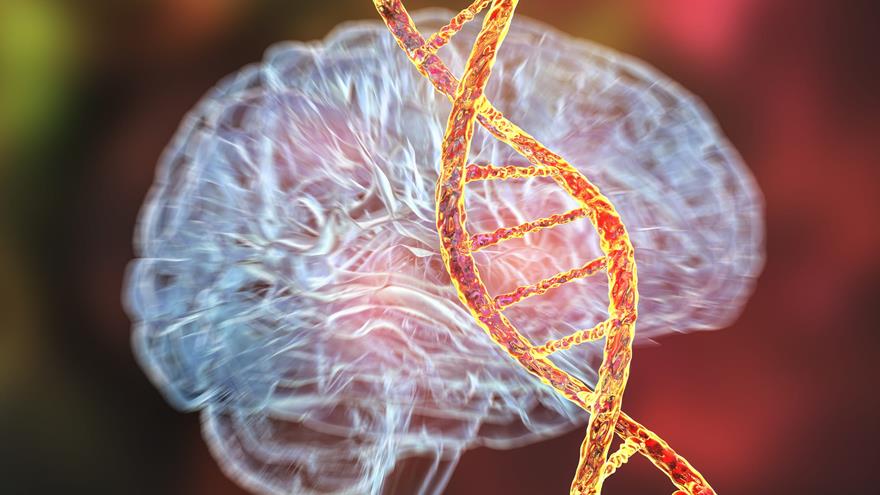Fossils Fuel This Student’s Attraction to the Academy
 By Ben Seal
By Ben Seal

Kevin Sievers doesn’t seem fazed by the giant moose peering over his shoulder. The family of antelopes just down the way can’t distract him, nor can the polar bear standing proudly over a freshly caught seal. He’s too busy speaking excitedly about a 370-million-year-old fish fossil that he spent 10 weeks studying at the Academy of Natural Sciences of Drexel University to notice the museum’s dioramas surrounding him, even as children run up to press their faces to the glass and get a closer look at the daunting displays.
Sievers remembers when he was their age, just 5 or 6, when he was first coming to the museum to appreciate paleontology, back before he even knew what it was called. The Academy was the place that sparked his interest in fossils and ultimately brought him to Drexel, where he’s now a sophomore studying geoscience in the College of Arts and Sciences’ Department of Biodiversity, Earth & Environmental Science (BEES). The Academy is the place that shaped the way he thinks about the ancient past and what its inhabitants can teach us about the present.
“They lived at a time that is so, so foreign to us,” Sievers said of the museum’s attractions, “but there are some things that happened back then that are still going on today. You still have these shifts in climactic conditions, changing ecosystems, animals that have evolved toward certain niches. You had these big apex predators and these things scuttling along the ground eating plants. Those same things are happening today, but we have a whole lot more to look back on, comparatively.”
And that’s what Sievers is here to do. He came to Drexel because of its relationship with the Academy. Within two weeks of starting his first classes last fall, he was already working as a docent, educating visitors on the dioramas, fossils and skeletons that line its halls — the very same objects and exhibits that have drawn him to the Academy since he was young.
“You almost feel like you have a duty of care,” Sievers said as a couple of small families milled around the dioramas on a Friday afternoon this fall. “It’s about making sure you’re giving these kids your best. I was in their shoes, coming to the Academy, seeing all this cool stuff, and the staff on hand were very helpful and generous and accommodating with my many, many questions, so I’m just paying it forward.”
Ted Daeschler, PhD, an associate professor in BEES and associate curator of vertebrate zoology at the Academy, met Sievers a while back at the museum’s annual Paleopalooza, then watched as he returned year after year for the event, always eager to learn more. There was something that set him apart from most of the kids visiting the Academy, something in the way he connected with the science behind it all.
“Kevin understood completely that dinosaurs are a group of animals and we can study them, but there are all of these other groups of animals as well, and there’s an evolutionary history that we’re interested in piecing together,” Daeschler said. “He gets paleontology in a more holistic way, instead of just wearing blinders. It’s refreshing to meet a young person who sees it that way.”
Sievers gets animated when talking about the Academy’s dinosaurs, like Hadrosaurus foulkii, which was discovered just an hour from where he grew up in New Jersey and in 1868 became the first North American dinosaur skeleton to be mounted. But his enthusiasm is just as evident when he talks about Tiktaalik, the fish fossil that ate up most of his summer, which he spent as a STAR Scholar tracing the bones in 4,000 slices of CT scans. His research showed that the fish’s jaw was well adapted for biting, adding to the research of other scientists who believed its angled eyes and nascent wrist bones mean it could have hunted for food on the shoreline, much like a crocodile.
Between diving in with Tiktaalik and attending conferences like the Society of Vertebrate Paleontology’s annual meeting in Calgary, Canada, Sievers has showed an unusual level of poise for a college sophomore, Daeschler said.
“Plenty of students wouldn’t have the confidence to think they could do research, and we’ve been trying to give them more confidence about that,” Daeschler said. “But Kevin, he didn’t need it. He just started doing it.”
He doesn’t plan to stop anytime soon. He loves the “air of mystery” in the museum’s behind-the-scenes collections, row upon row and cabinet upon cabinet of bones holding clues to the past — and maybe, also, the future.
“It gives us perspective,” Sievers said. “It gives us a context for what we see now. We’re just this one little slice of time in 4.5 billion years or so of Earth history.”
Drexel News is produced by
University Marketing and Communications.
